Digestive system!
All living things need to use energy. That means that they need to somehow get energy.
Some organisms make their own sugar from sunlight or a similar energy source.
Others need to consume other organisms to get the energy they need.
The process by which an organism obtains, eats, and digests its nutrients is called the digestive system.
In this unit we will learn about the anatomy / physiology involved with eating and digesting. We will use humans as an example for most of this unit, but also talk about other organisms. We will also learn about what nutrients we need to consume and what they do for us. Lastly, we will investigate some factors influencing metabolism (the rate at which all the energy gets used).
Some simple creatures just use diffusion to eat:

Remember diffusion from our last unit? It is when there is a flow of stuff from where it is concentrated to where it is not. If a creature breaks down all the sugar in it very quickly, then there will be next to no sugar in it allowing diffusion of sugar (and other nutrients) to flow in.
This system is nice in its simplicity. But, it cannot allow an organism to get very big or complex.
Some are larger and more complex and need to have a mouth:
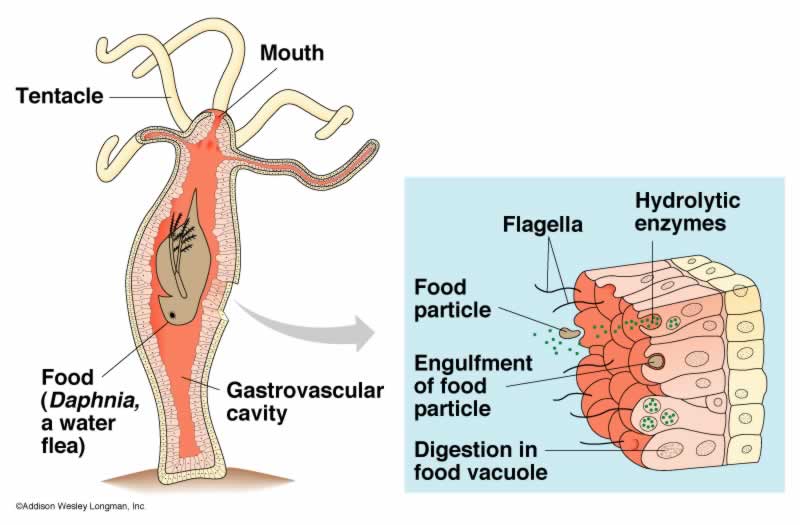
This organism is called a hydra and also uses a lot of diffusion, but has a "stomach" to break down food.
Some organisms have adapted to have a tube within them:
This is a segmented worm and is a simple "tube-within-a-tube system."
We have this tube-within-a-tube digestive system. Our inner tube is a little bit longer and balled up and our outer tube has arms and legs, but we are essentially the same:
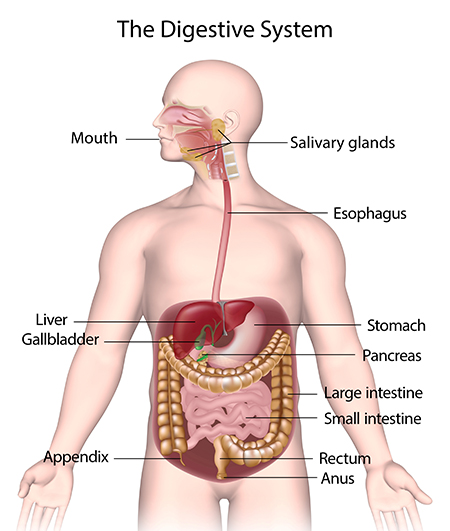
What is the advantage to this kind of system?
You can eat, digest, and eliminate all at the same time meaning you can get larger and more complex.
Let's look closer at humans:
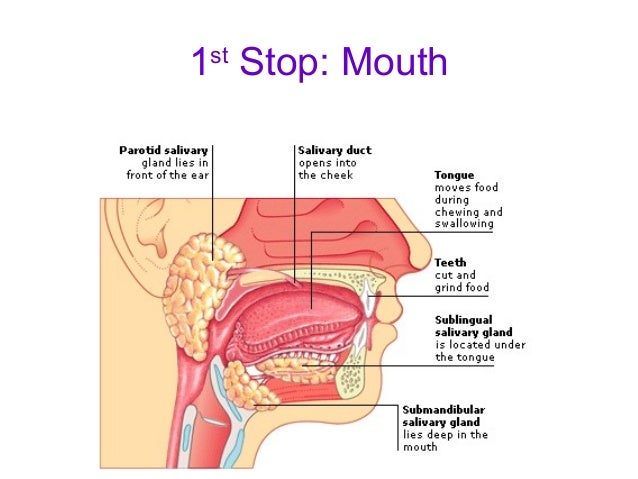
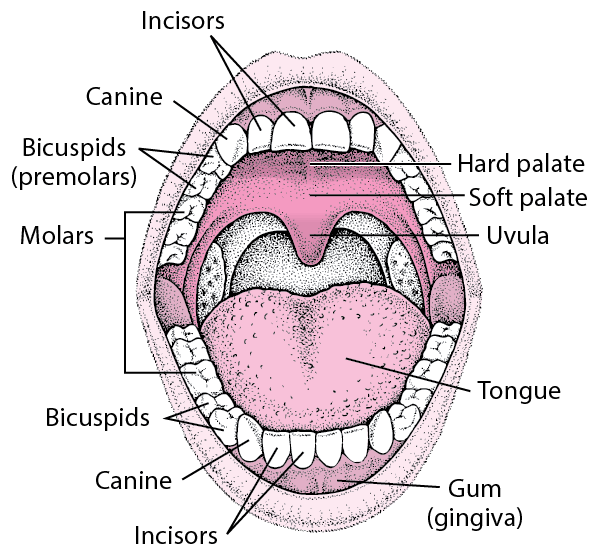
1st stop involves chopping the food into small bits and adding saliva.
The type of teeth tell us a lot about the types of food the organism has traditionally eaten.
What does saliva do for us?
It digests starches (carbohydrates), gloms food together, lubricates throat, allows for taste, and stimulates the stomach.
Then the bolus goes past the epiglottis and down the esophagus through a process known as peristalsis:
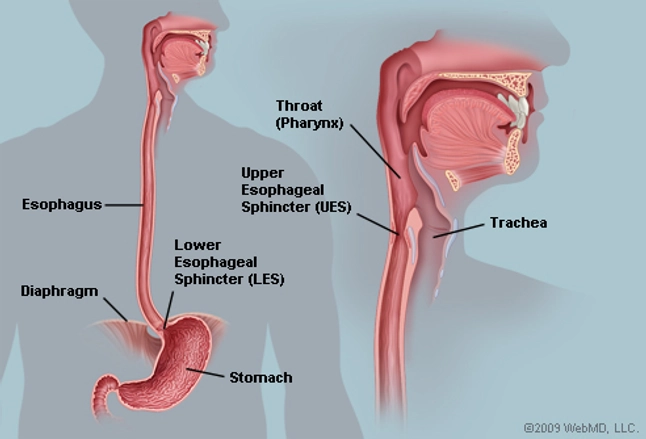

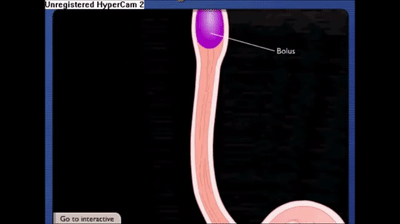
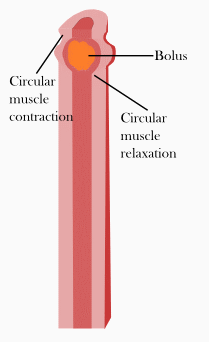
Then to the stomach where hydrocloric acid and pepsin (to break down proteins) get added:
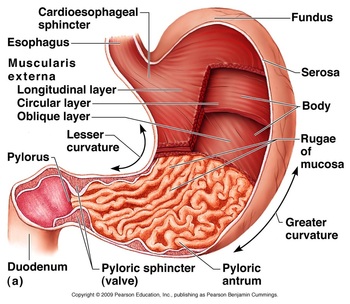
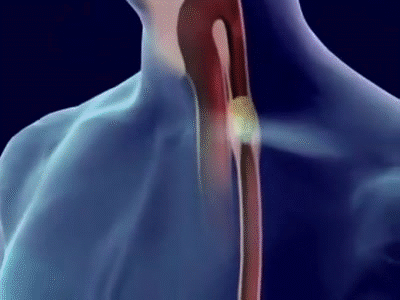
Next, on to the small intestines where a base (to neutralize the stomach acid) and bile (to break apart fats) get added:
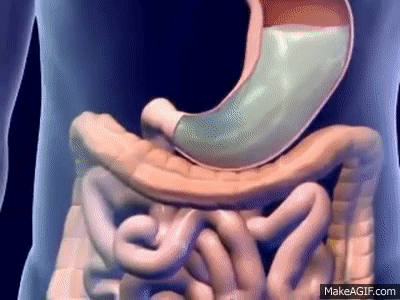
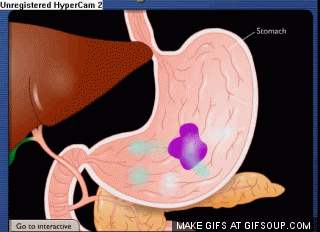

This is where the bulk of the digestion and absorption happen.
To aid the absorption, the intestines look like this:
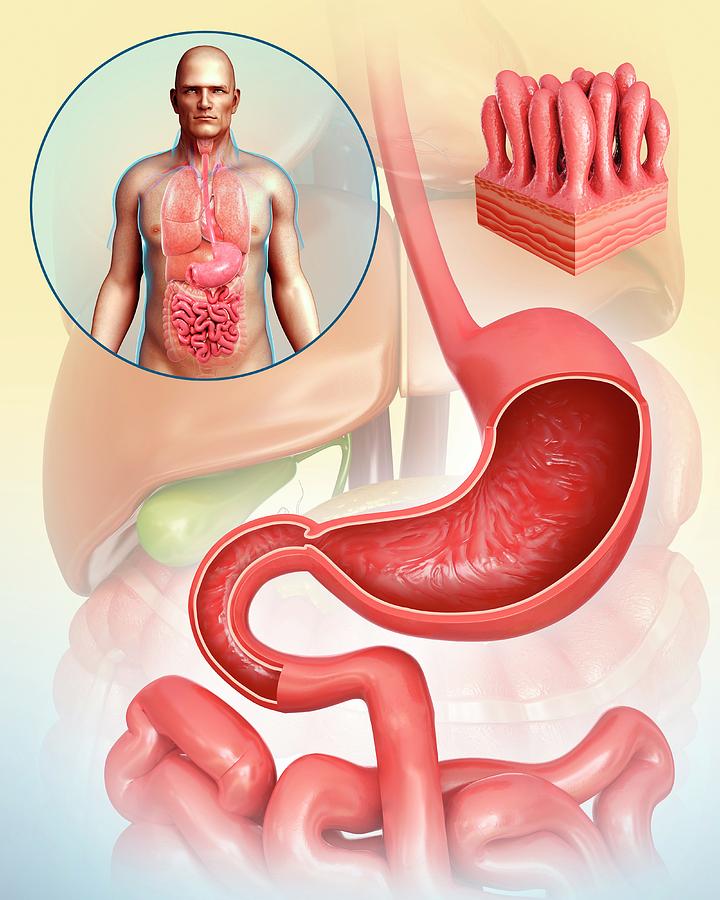
All those folds increase the surface area allowing more absorption.
Lastly, the bolus moves through the large intestines to absorb water and let the bacteria have a crack at all those nutrients before we defacate the undigested stuff (feces).
Different creatures have different systems, but they work similarly to how humans do. Some (like chickens) may not have teeth, so they need a chamber like a gizzard and swallow stones (to act as teeth). Some animals want to get the benefit of the bacteria in them so they can digest plant matter that we cannot. Those animals (like cows) have large chambers to hold bacteria (called a rumen). Sometimes you will hear people say that they have four stomachs because of these chambers. They actually have no organs called a stomach, so they have 0 stomachs. But the underlying processes are the same. The food get in, gets broken up, gets broken down with enzymes, gets absorbed, and the unused stuff gets sent back out. Somewhere along the way, bacteria live in there breaking down plant matter. All of this is to give up nutrients.
But what nutrients do you need?
There are the big nutrients:
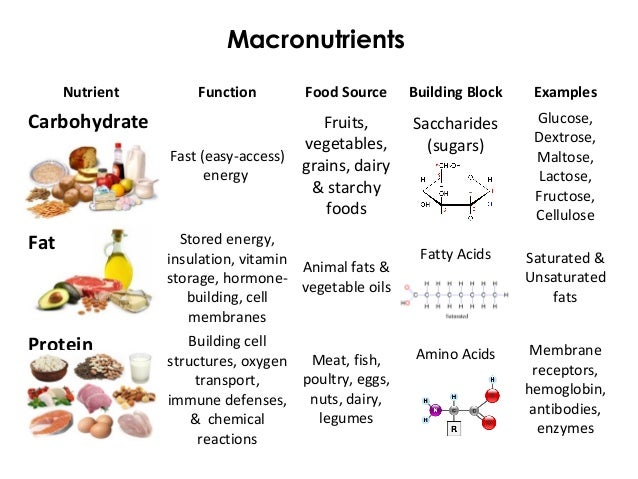
And the micro nutrients:
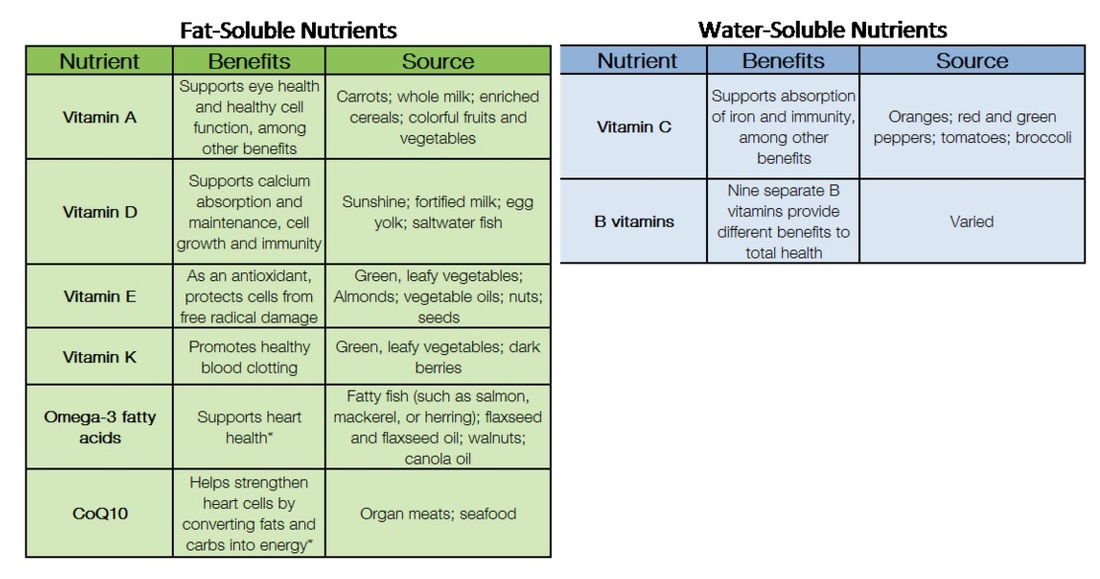

That's a lot!
You certainly do not need to memorize all this. But, understanding the basics of what we need and what it does for us is important for being healthy.
Metabolic needs?
Metabolism is the sum of all the chemical reactions, in other words...what you eat and how you break it down.
Factors influencing metabolism are:
genetics, age, sex, activity level, what foods you've been eating, physiological state, etc.
So, that is the basics of obtaining, digesting, and absorbing the building blocks we need...in other words, digestion.